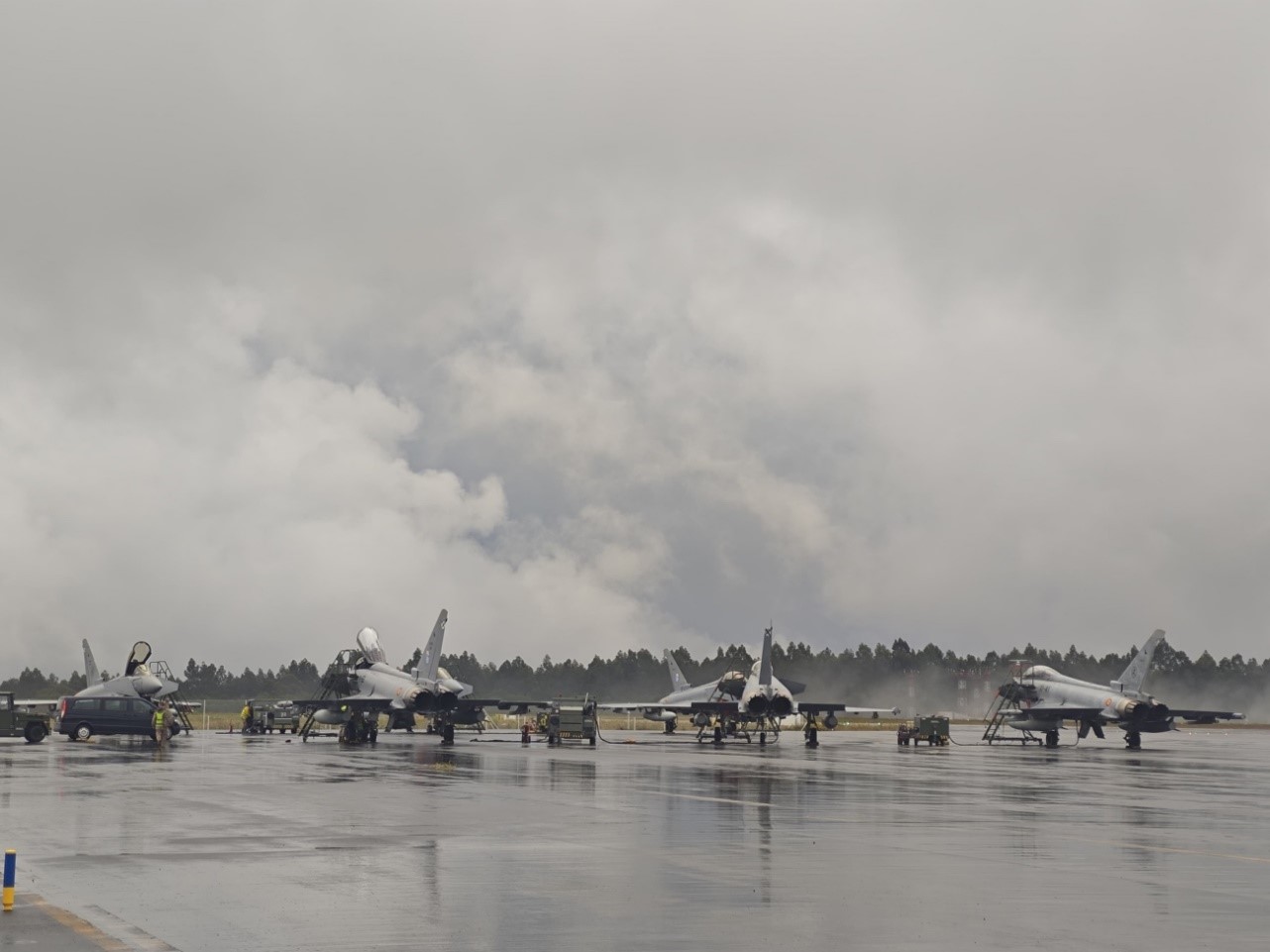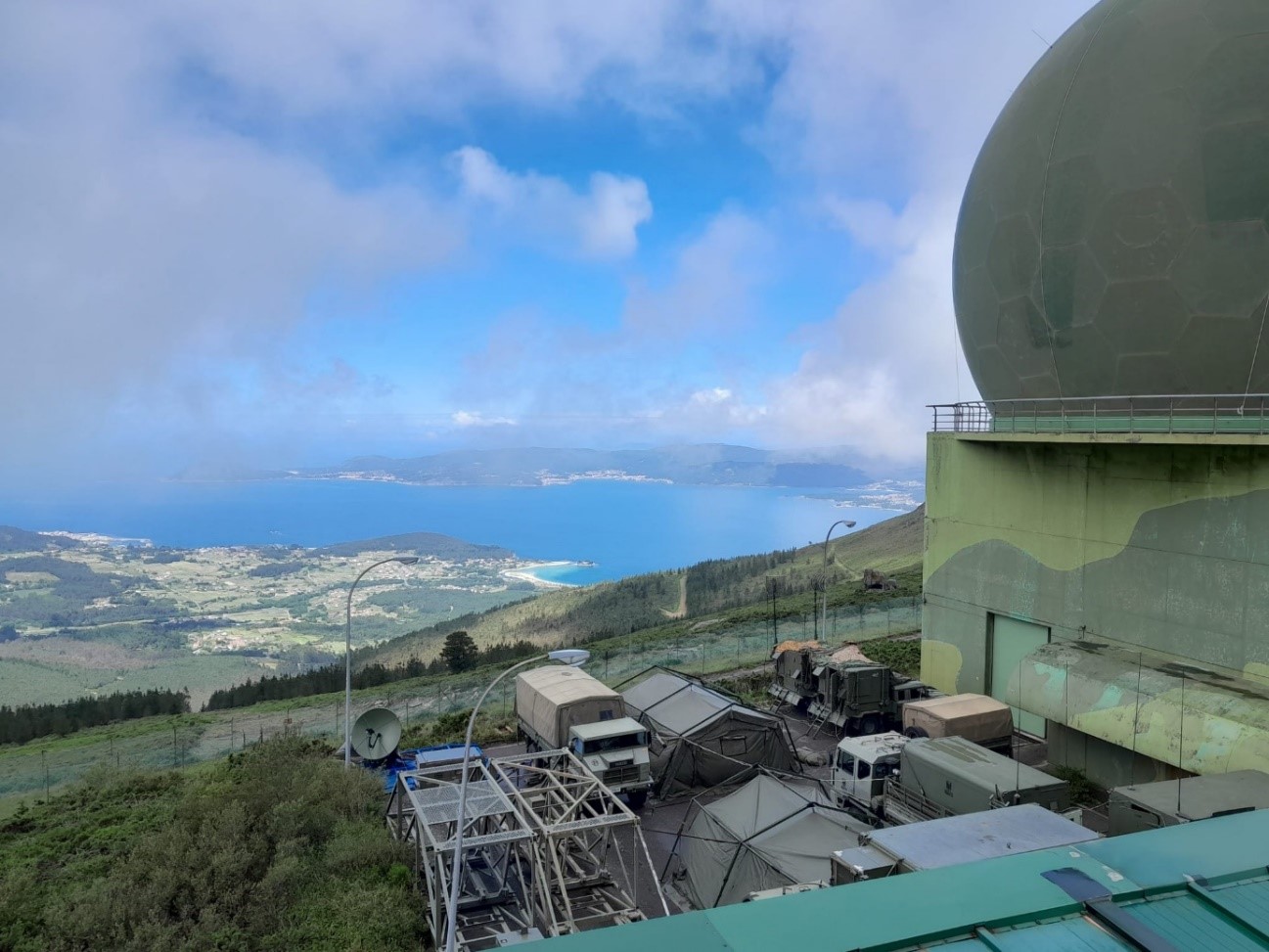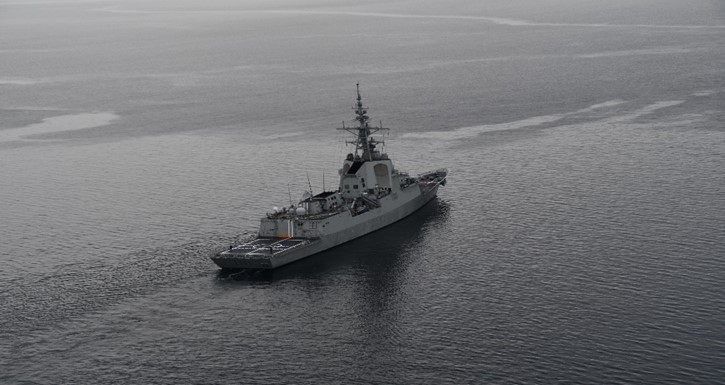
Eagle Eye' activation successfully accomplished 24-02
- For 5 days, different defensive air missions were carried out, integrating air, land and naval resources
The Eagle Eye 24-02 activation, led by the Operational Air Command (MOA) and under the operational control of the Operations Command (MOPS), which began on Monday 17 June, has come to an end in the northwest of the peninsula.
In this activation, which is part of the presence, surveillance and deterrence operations, Air and Space Forces, Army and Navy resources have been assigned to jointly integrate into the national Air Defence System, maximising the efficiency of the participating resources to guarantee the surveillance and defence of airspace of national sovereignty and interest.
Several defensive air missions have been carried out in response to incursions and movements of unidentified aircraft, through which the training of all participating units has been improved.
From the Spanish Air and Space Force, six Eurofighter jets from the 11th Wing, from the Morón Base in Seville, deployed to the Military Airfield of 'Santiago' on a Quick Reaction Alert (QRA) mission. During the activation, the Eurofighters carried out air-to-air combat manoeuvres and interception missions, demonstrating their ability to respond quickly to potential threats. Escort and strategic asset protection exercises were also conducted, highlighting the versatility and power of these fighters in simulated combat scenarios. To accomplish this mission, the deployed pilots have been on duty around the clock, permanently prepared to be in the air in less than 15, 60 or 240 minutes, depending on the situation, if activated. For this air surveillance mission to be carried out, the work of all the support and maintenance personnel, who have everything ready so that the aircraft can be in the air in the stipulated time, is very important.
In all, 24 QRA alerts were carried out, representing more than 39 hours of flight time in air defence missions. The performance of the 11th Wing has been fundamental in assessing interoperability with other air and ground platforms, strengthening cooperation and coordination between the various units present. This deployment not only demonstrated the 11th Wing's readiness and flexibility, but also contributed to improving joint tactics and strategies in a multi-platform environment.
The command and control post has been set up at the Air Operations Centre (AOC), from where Tactical Command has been training and tactical control has been carried out for surveillance operations, air police and air defence of national sovereignty airspace, delegating, when necessary, to the control entities integrated in the Air Defence System.
In addition, the Central Command and Control Group (GRUCEMAC) provided, thanks to the Link links, a total vision of the situation of the airspace to be monitored, using all the assigned resources, identifying the traces and deciding in each situation the tactical action to be taken. The ARS also controlled the different air forces participating in the activation, managed the surveillance and identification of the airspace and managed the parameters of the radars belonging to the Air Surveillance and Control System, optimising their use.
As for the Army, the Anti-Aircraft Artillery Unit (UDAA) Hercules 24-02, deployed in the towns of 'Noia', 'Lousame', 'Mazaricos' and 'Porto do Son', was formed by personnel and equipment from the RAAA 71, RAAA 73, RAAA 74, UTMAAA, GACA XII and the BIMT I/67 LEGAZPI. The UDAA has fulfilled the assigned mission, demonstrating its readiness and availability to guarantee the security of the airspace of national interest through presence, surveillance and deterrence in the sovereign air area.
For the Navy, the frigate "Álvaro de Bazán" (F-101) has contributed to the surveillance and air defence of the national territory in the waters of the Cantabrian Sea and the Atlantic Ocean. The main mission of the F-100 frigates within the Eagle Eye activation is to actively contribute to Air Defence. The different equipment and systems on board, especially the AEGIS Combat System and the SPY-1D radar, not only allow for the early detection of air traces, but also enable the frigates to confront any threats that may arise. This has allowed training to be maintained, as well as evaluating the integration of air, naval and ground resources in highly complex situations. The ship's crew consisted of 205 men and women, including two tactical controllers of aircraft at sea (CTAM) from the Airborne Air Group (GAE) and a tactical liaison network manager belonging to the Air and Space Force.
During the Eagle Eye 24-02 activation, more than 2,000 participating military personnel demonstrated their high level of readiness to contribute to the security and defence of national sovereign airspace, 24 hours a day, 365 days a year. This has demonstrated the perfect synchrony in terms of air defence between the participating Air and Space Army, Army and Navy systems, demonstrating their capacity for integration into the Air Defence System (SDA) and developing synergies to undertake multi-domain actions within the framework of permanent operations in national sovereignty.
Fotos





